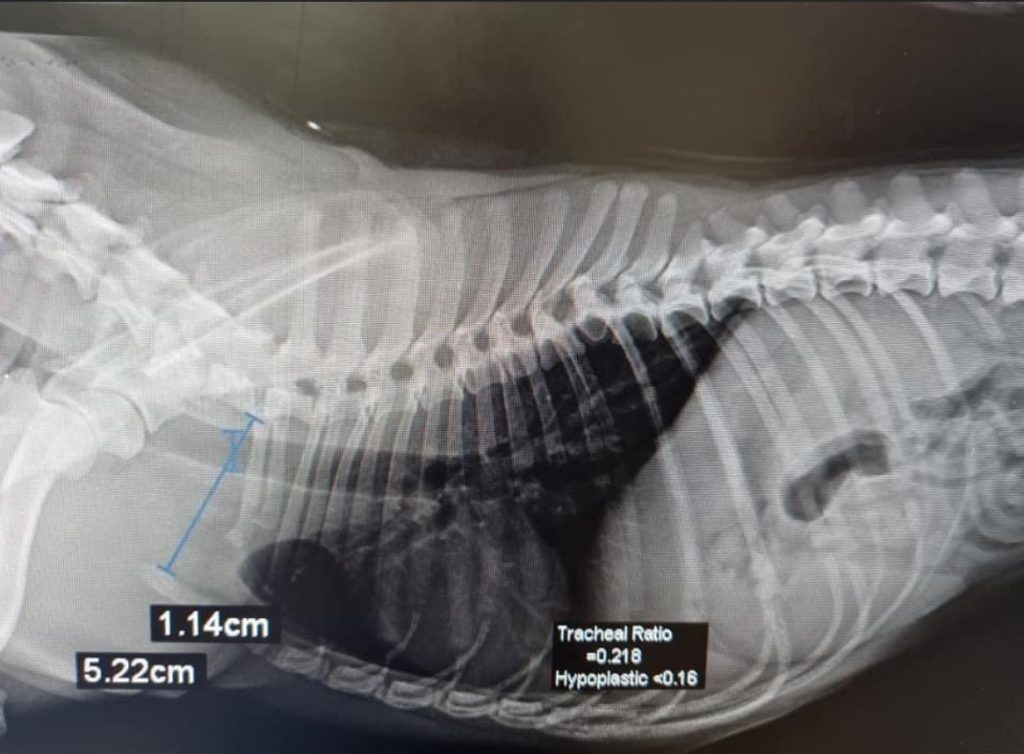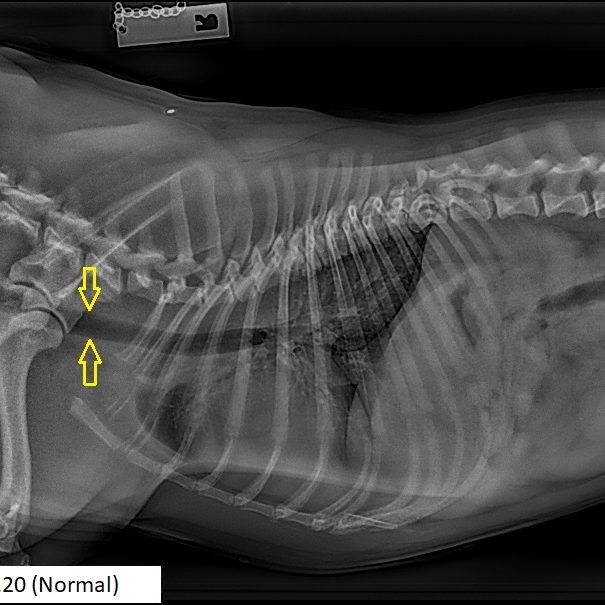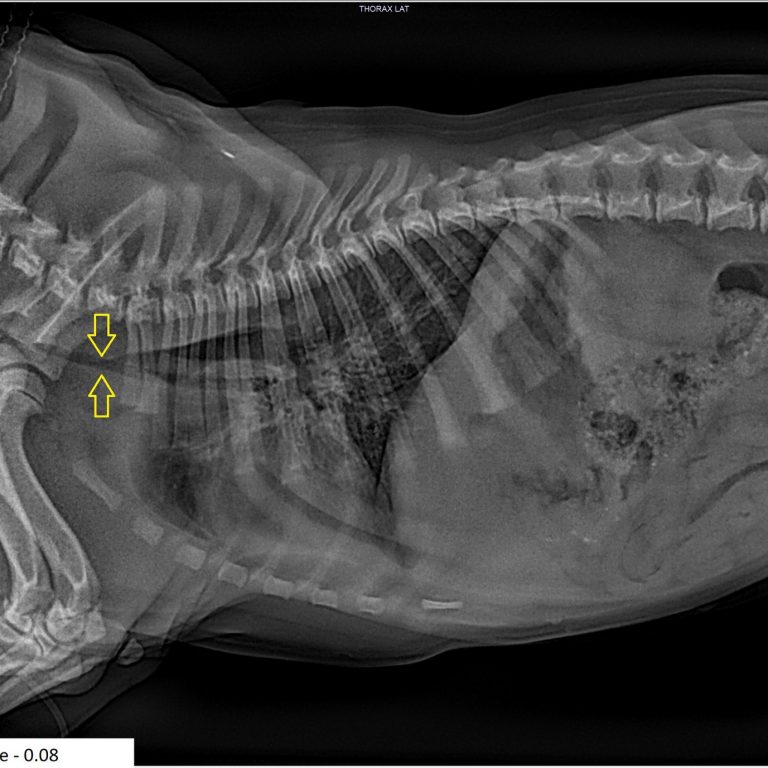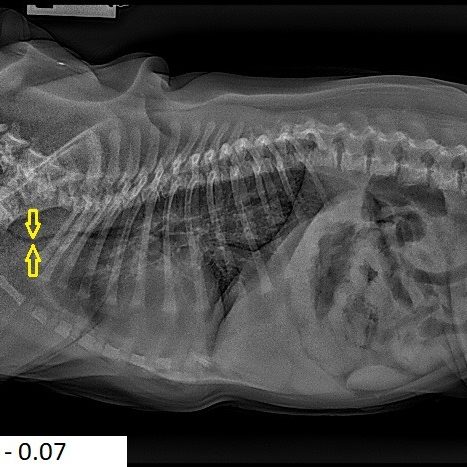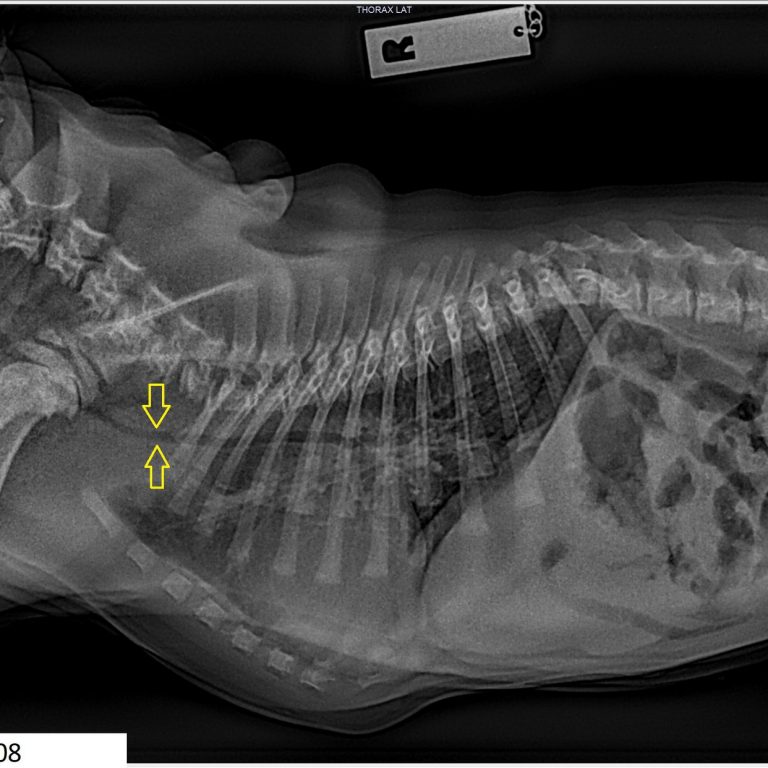Important Management Considerations
The ratio does seem to improve with age up to 10-12 months in many individuals, but this is not a given in all dogs. This fact is why we feel anaesthetic risk will be lower at that age if the ratio has improved, hence we prefer to manage breathing restrictions medically in these patients, rather than going straight to surgery. The management of hypoplastic trachea includes the following:
1. Steroids at 0.2mg/kg dexamethasone for 24 hours, to then continue prednisolone at 1mg/kg daily for 3-5 days only in acute cases. (Just start with oral prednisolone in less acute cases)
2. Metoclopromide at 5-10mg 2x daily for 7-15 days. (This can be adjusted according to weight etc.)
3. Omeprazole at 10-20mg once daily ongoing if a good response is achieved, but again this can be adjusted as appropriate.
A few points for vets on the above triple treatment to manage these cases:
- If there is not significant improvement after 24 hours of starting steroids, or indeed if the patient is worse, then stop steroids and consider radiology in case true aspiration pneumonia is of concern. Almost all improve significantly, but just keep this safety check in mind.
- Although we only really use steroids for short “recover” bursts to get quick control of excessive gagging, coughing, vomiting, increased breathing effort, we occasional may consider a low 0.25mg/kg every second day dose for weeks to a few months if really needed to control signs well. But ideally if this is needed, we may recommend an initial early surgery.
- Omeprazole can be used two times daily and in higher doses, but about 10-20% of cases actually respond poorly to Losec, potentially worsening vomiting or at least having no effect. So monitor and manipulate as appropriate.
Managing these cases as per the above is preferential to surgery if it is working really well, but is also a bit of an artform rather than an exact science given the different responses different individuals can have to the various medications. Experience helps. If not managing quickly and well with a balancing of the triple treatment, then for early surgery we recommend consider the following:
- Explain the increased risk of both death, and potential need for an emergency or elective tracheotomy with the smaller trachea ratio.
- We feel removing tonsils, saccules if everted (highly likely) and nares widening gives an excellent chance of relief, and has less chance of post-surgical swelling and complications than palate surgery as a first step. However, if the palate is very significant then potentially addressing this at that time may be less of a risk that not. A judgement call needs to be made with experienced examination, but we tend to recommend everything but the palate first up as an early surgery.
- Do explain the palate is still growing hence will highly likely need another surgery at 12-18 months if addressing this aspect on the first surgery.

